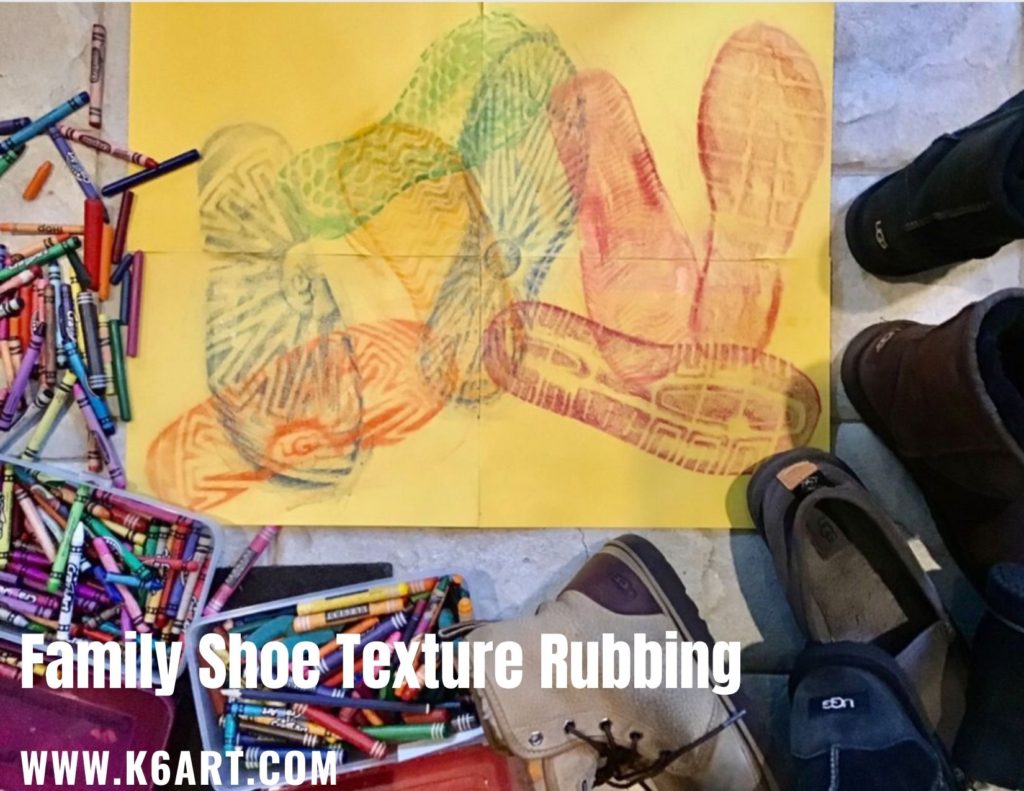
Here is an art project that teaches students about texture, is lots of fun and is perfect for both distance learning and the classroom.
Enjoy!
-Rina

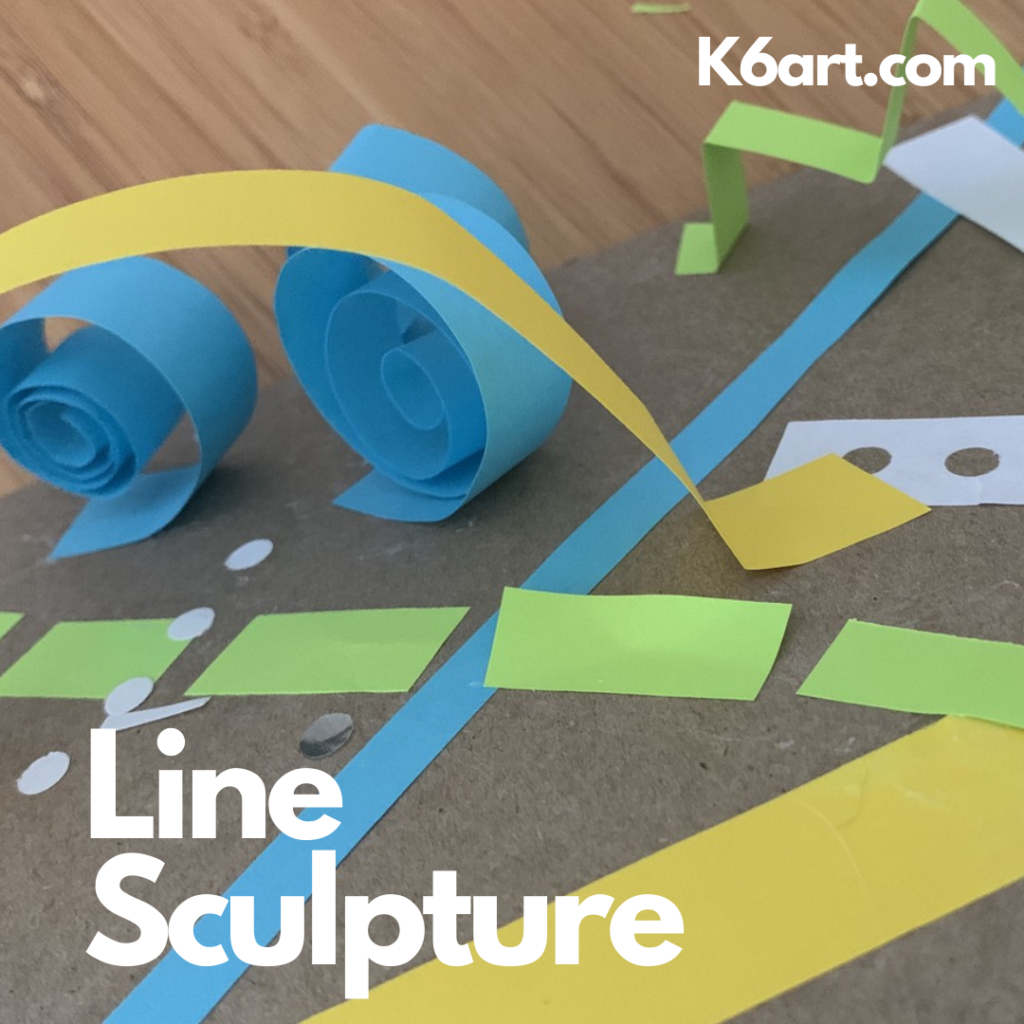
Looking for a fun sculpture project that combines line and 3D design? This super-successful line sculpture lesson is perfect for both distance learning and for the traditional art room. You’ll need paper, scissors, a glue stick and a cereal box. I’ve attached an instructional video you can share with your students.
*three strips of colored paper (I just cut Astrobright paper into 1/3s). For distance learning, students could use any paper they have at home.
*scissors
*glue stick
*cereal box/cardboard (or construction paper) for the base
*optional: hole punch
The students were familiar with lines (we had just completed my Line Rainbow Fish project).
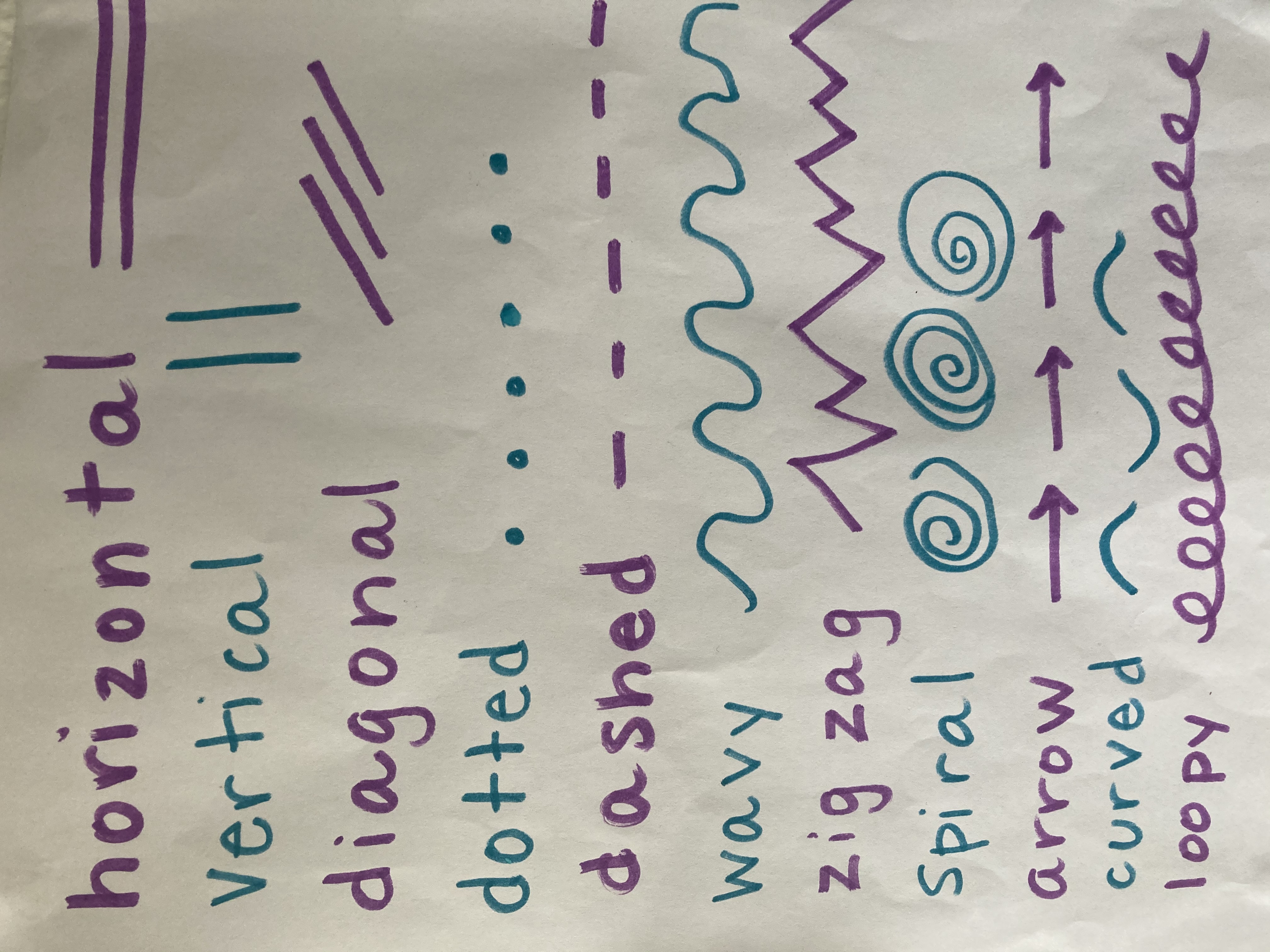
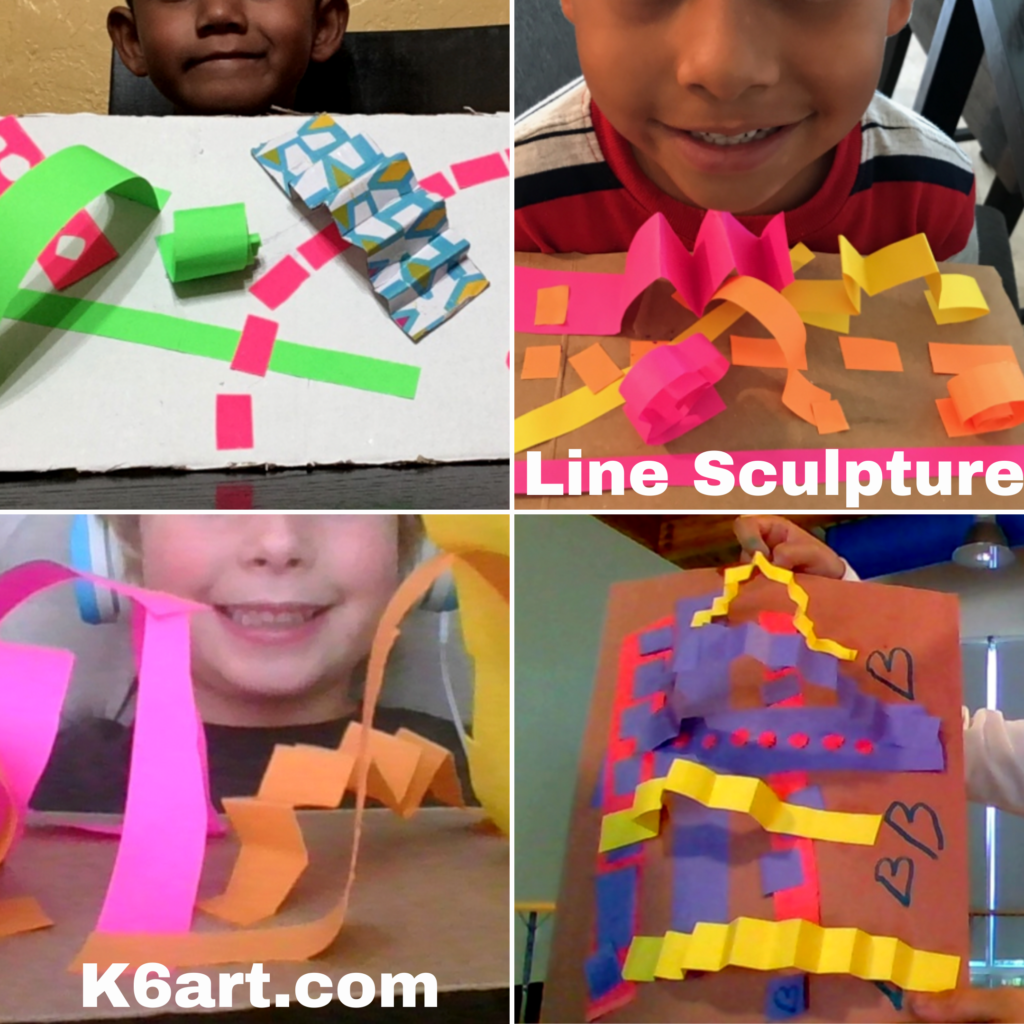
Enjoy!
-Rina
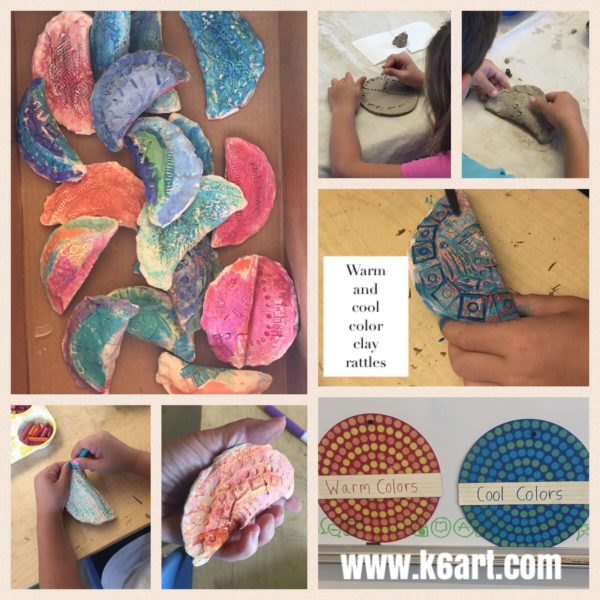
If you are looking for a super-successful clay lesson for Kindergarteners-second grade, you’ve come to the right place. These functional clay rattles only requires a single bisque firing, and are finished with a fast and easy warm and cool color process. Students, parents and teachers loved them. I’ve included an instructional video at the end of this post – all my kindergarten students watched it and created the rattles independently.
Materials:
To create the rattles:
Prep:
Roll the slab and cut the circles. Cover the tables. Each table should have a tray of LEGO, one toothbrush for every two students, and small water dish. They also need a couple of squares of toilet paper and a little scrap clay.
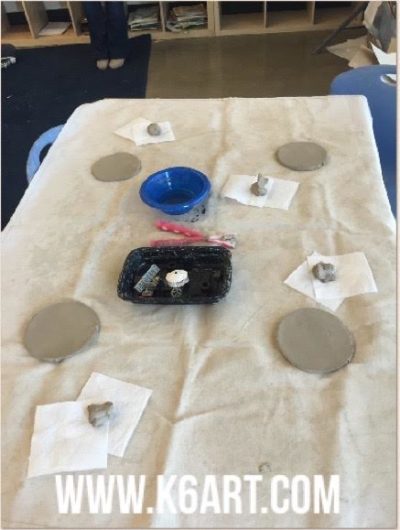
Process is in my instructional video. This was a very effective video: 100% of KINDERGARTENERS did this project correctly and independently the first time. I strongly recommend showing this.
Coloring the rattles:
Materials:
Process:
Students scribble on the textured ceramic with their crayons. Ideally, one side could be cool color crayons and the other warm. Then they paint over the crayons with (ideally), the opposite color scheme. This was kindergarten….some did it, some didn’t, but they all looked great.
This was a great end of year project: all my water colors had just about run out. Yet we had enough for this project. I sure look tired in this video, though. Typical for end of year…
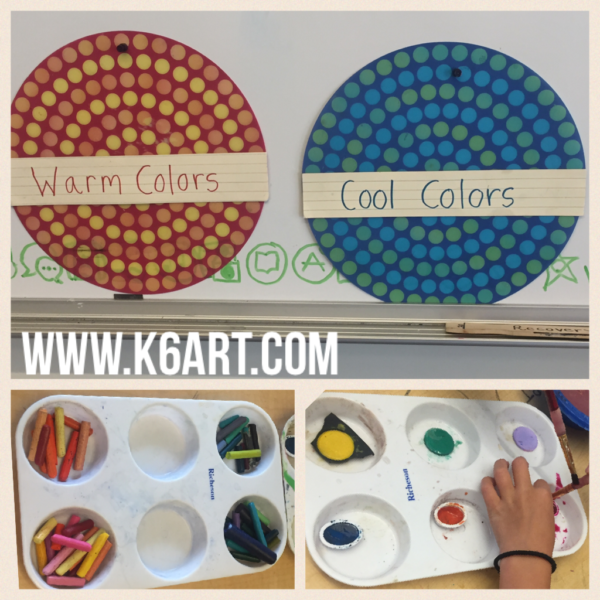
Enjoy!
Do you have a sure-fire clay project for kindergarten?
Have you tried creating instructional videos?
Our kindergarteners are enjoying art class! This fall kindergarten exploratory art is 60 minutes long. That’s a long time for a five year old, particularly in the first weeks of school. I’ve had a lot of success with a three-part lesson:
These centers are much more than fun: students learn about shapes and colors while exploring the clear acrylic shapes. They test their memory at the memo card game. Punching builds hand strength. Stamping with tiny stamps and gluing tiny shapes are great fine motor activity. Magnetic sculpture allows students to explore science and sculpture.
All centers were on a 10 minute rotation. We rotated through the centers for two days so everyone had a chance to explore everything.
Want to try these at home?
Click here to learn how to make your own magnetic sculpture center.
Click here to learn how to make your own glue sponge, perfect for collage.
Enjoy!
Do you have a favorite kindergarten art activity?
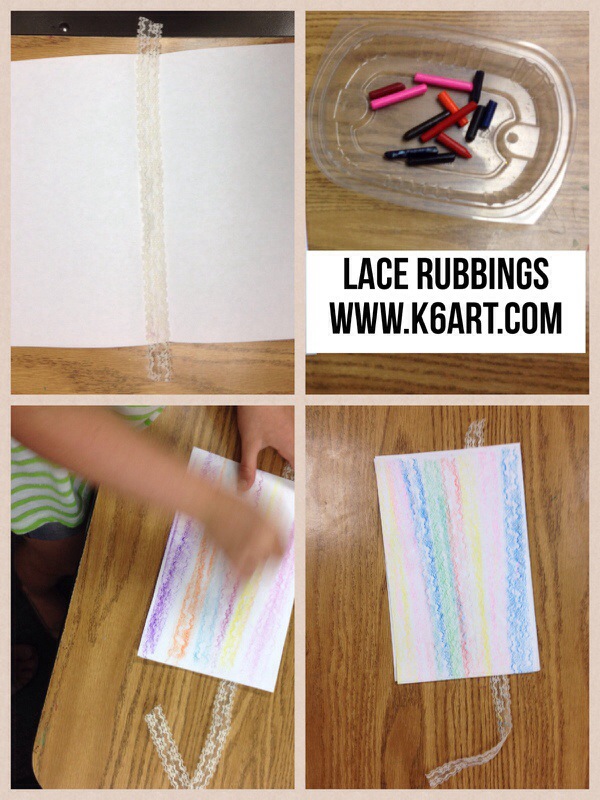
Here’s an easy end-of-year art project that has no clean up yet teaches about texture.
Materials:
Copy paper
Pieces of lace, approx. 14″ long
Peeled crayons – variety of colors
First we talk about physical texture. Students run their fingers along the lace. They described the lace as ‘bumpy’ or ‘rough’. Next we folded the copy paper horizontally (‘hamburger’) and sandwiched the lace inside, parallel to the crease. Students closed their papers and rubbed the covered lace with a peeled crayon.
The kindergarteners and first graders were AMAZED when the lace texture appeared on the paper. We opened the papers, scooted the lace over an inch or so, and repeated the process with a variety of peeled crayons. Within a few minutes, students had a lovely striped lace paper.
Physical vs Visual Texture
We had a quick discussion about physical and visual texture. Students ran their hands over their crayon art. How did the paper feel? Did it feel the same as the lace? The bumpy lace has texture you can feel. This is physical (tactile) texture. The rubbing has texture we can see but not feel. .This illusion of texture is called visual texture.
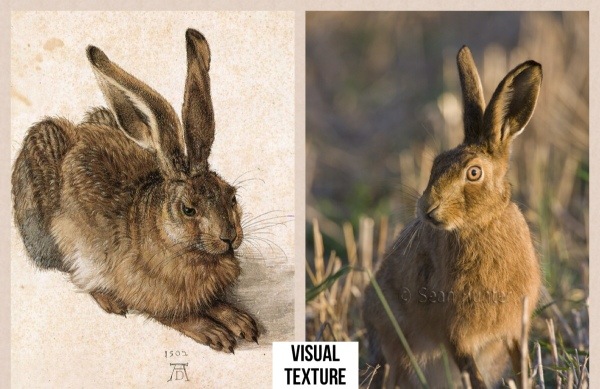
I showed students a laminated poster of Durer’s hare. I instructed them to close their eyes and imagine petting the rabbit’s soft fur. They agreed the artists had done a great job painting the hare so that the fur looked real (visual texture). I let them touch the laminated card – it just felt like smooth plastic. The art just had visual, but not physical texture.
We went on to create crayon rubbings of other textured items such as cardboard coffee sleeves and pennies. They loved rubbings – one student said it was the best thing we did all year.
Enjoy!
What’s your best end-of-year art project?